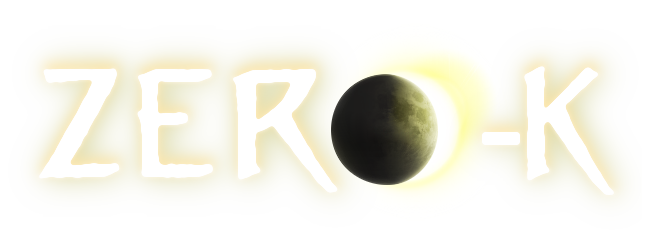There's a lot of nuance in the different factories, and I'm not the best equiped to explain it. I don't play starcraft 2, but I think the factions in starcraft are probably more varied than the individual factories in zero-k because there's a maximum of 10 combat/combat support units per factory. Zero-k makes up for that by letting a player use multiple factions by building a new factory type mid-game to build specific other units to combo or tech.
You say that the game lacks a scale to it. On small, close quarters maps, that's definitely true. If 2 players get locked in a head on head fight over a single front, it's also true. When focusing on a front line, there's a lot of player skill involved in microing units to capitalize on weaknesses to dominate battle and throw the unit counter structure out the window. Raider<Riot<Skirmisher<raider? 6 glaives is all it takes to kill a reaver for cost(3 glaives die) on an open field with a semi-circle surround. scorchers are surprisingly good against maces. Daggers, once you have like 15 of them, only lose 1 or 2 to take down a single mace in 1 volley.darts and schorchers can approach an ogre in a scatered formation(achievable through a spiral shaped move command to split them evenly apart and Ctrl+rightclick point to move together in formation at the same speed) to close the distance and slow/kill it. In skirmisher wars, instead of using attack move, move your units directly with clever line moves to force the enemy skirmishers back, maybey even just move them around and sandwich them into riots you control to shred them at close range. Using terrain and micro to your advantage you can pull off amazing things.
If you get the chance to battle your enemy across 2 fronts, or 3 fronts, that changes. Earlier tonight I played a match on Wanderlust which had a lot of back and forth though a big main fight in the center and mixed unit raids through the north and south. In a situation like this where there is no distinct front line, but multiple battles separated by cliffs and hills I can't rely on crazy micro to pull off the impossible on all fronts. I need to rely on attack move where the general unit counter structure reigns supreme. I had to keep on top o the big center push, using mostly skirmishers and riots fighting on attack move while also balanceing raids on the north and south which consisted of both glaives and multiple reavers, which I need to change my production and divert units from my front to respond in kind, try and push into the hevily porced enemy side which I eventually sent 4 slings and some reavers to try and deal with. Those raids also kept hammering my energy income, so I had to queue up more solars and remex the territory, as well as reclaim for good measure. This kind of scale is a lot easier to achieve with cloakybots vs cloakybots on a map like wanderlust because their units are cheep and metal is plentiful. And this game is fundamentally different from that early game where there's small numbers of units engaging each other on a small front of the map, and take the micro knowledge of battles away and gives in place a more macro-style of battle.
and the clusterpot is also super fun pick a factory that noone else has and see if you can do anything on the map :) do rover fencer spam or build minataurs and constanylt assult/retreat to repair and try to never lose a tank. balling up to like 6 of them eventually is a near unstopable force, especially if you add an ogre and switch fronts and run down someone not expecting a lot of heavy tanks. spam glaive, spam grizzly, see what works 1 on 1 for the micro combat. abuse your units to the max.


